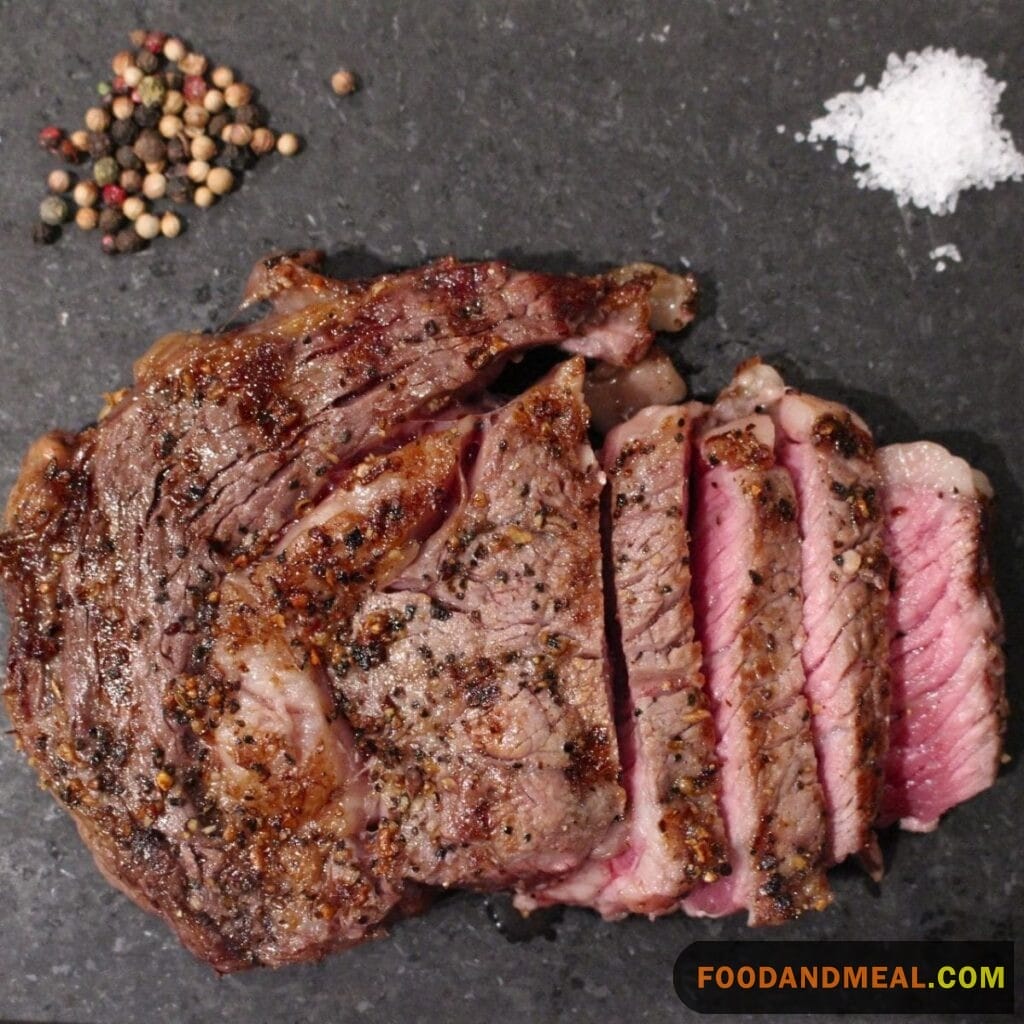If we find ourselves with a leftover steak or a portion of one, the idea of reheating it might initially seem challenging. The good news is that, at Food and Meal, we’ve discovered that How to reheat a steak to maintain its juiciness and overall quality is entirely possible. However, the less-than-ideal news is that doing it right isn’t a quick process. In the following, we’ll guide you on how we have successfully accomplished this task.
Should You Reheat a Steak?
When faced with half a steak or less, the prospect of reheating the entire portion may not be practical. It could be more advantageous to slice it up and create a steak sandwich, incorporate it into a salad, or use it in a stir-fry. For the purposes of this discussion, we are assuming that you have a sufficient quantity of steak to make reheating a worthwhile endeavor—which is a decision left entirely up to you.

Reheating Means Recooking
Another crucial factor to consider is that when you’re reheating a steak, you’re essentially cooking it twice, posing a challenge (although not an insurmountable one) to maintain its original level of doneness. This is because the doneness of a steak is contingent on its internal temperature—how hot the interior reached during the initial cooking. Achieving a specific doneness, whether it’s rare, medium-rare, or medium, involves cooking the steak to a designated internal temperature. For rare, that range is 120 to 130 F. Medium rare falls between 130 to 135 F, and medium is within 135 to 145 F.
So, if the aim is to reheat a medium-rare steak while preserving its medium-rare status, the key is to heat it in a way that ensures the internal temperature remains below 130 F.
Use a Thermometer
And you know what? The most accurate way to determine the temperature of a steak is by using an instant-read thermometer. While it may sound counterintuitive, the common belief that poking a steak with a thermometer causes it to lose juices is widespread. However, the reality is that a steak is not comparable to a water balloon. While there may be a slight loss of juice at the point of puncture, overcooking leads to a more significant loss of juices throughout the entire steak. Ultimately, the best approach to preserve a steak’s juiciness is by avoiding overcooking, even if it entails making a small hole in it.
So, grab an instant-read thermometer and prepare for reheating method #1.
Reheating Method #1: Oven to Stovetop
When we find ourselves with a leftover steak at Food and Meal, the first step is to take it out of the fridge and let it sit at room temperature for 30 to 45 minutes. Preheating the oven to 250 F is crucial, ensuring a slow reheating process to minimize the risk of overcooking.
To execute this method, we place a cooling rack or grill rack on a sheet pan, positioning the steak on the rack. The steak goes into the oven for 20 to 30 minutes, adjusting based on thickness, until the internal temperature reaches 110 F, a measurement we obtain with our trusty thermometer. Following this, we transfer it to a hot pan with a bit of oil for a quick sear, approximately 30 to 60 seconds on each side. This method, tried and tested by us, ensures a deliciously reheated steak.

Reheating Method #2: Sous Vide
Another fantastic approach we’ve discovered at Food and Meal for reheating steak is utilizing a sous vide cooker. Sous vide, involving sealing the food in plastic and immersing it in water at a specific temperature, is a method many of us at Food and Meal appreciate for its precision. While sous vide cookers have built-in thermostats, we understand that not everyone may have one. So, we heat a pot of water until it starts steaming, check the temperature with a thermometer, and once it reads 130 to 135 F, lower the heat to medium-low.
For the sous vide process, we seal the steak in a resealable freezer bag, ensuring to press out as much air as possible before sealing. The bag goes into the heated water, and we leave it there for approximately an hour, adjusting the time based on the steak’s thickness. Once heated through, a quick sear on a hot pan recrisps the outside, ensuring a delightful dining experience.
Other Methods
At Food and Meal, we want to bring your attention to a couple of alternative methods that, while not foolproof, offer quicker options.
Firstly, there’s the microwave. There’s a common belief that reheating a steak in the microwave is not ideal. However, when done carefully, utilizing low power and 30-second bursts, we’ve found that it can actually work quite well. Contrary to popular myth, microwaves don’t cook “from the inside out.” Their penetration is limited, heating the outer layers of the food by exciting water molecules. These outer layers then conduct heat to the inner layers, similar to a grill or an oven.
Another option we’ve explored at Food and Meal is reheating a steak on the stovetop. Heat your skillet, add a touch of oil, and introduce your room-temperature steak, searing it for 60 to 90 seconds on each side. Of course, it’s essential to check the temperature with a thermometer during this process. The longer it cooks, the higher the risk of transforming a medium-rare steak into medium or a medium steak into medium-well.
I'm Kelly Atkinson, with a passion for dissecting the world of home goods. My reviews stem from thorough testing and a love for sharing detailed insights. Each piece I write offers a glimpse into my explorative journey, aiming to guide readers to informed choices with authenticity and precision, making every review a blend of exploration and expertise.
